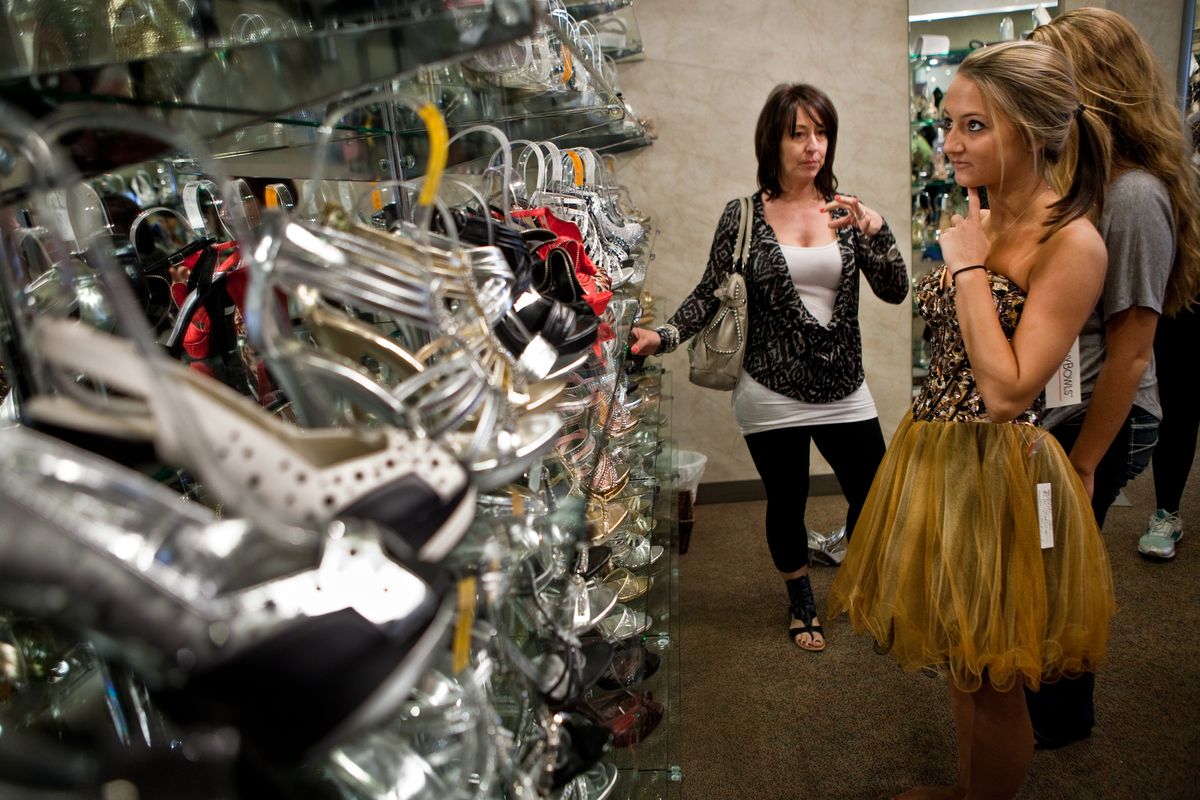Tan ban for teens?
As prom season approaches, debate over use of tanning beds by minors is heating up

CHICAGO – Morgan Cain scurried in and out of a dressing room at Peaches Boutique on Chicago’s Southwest Side amid a flurry of sequins and chiffon in search of the perfect dress for her senior prom.
Like legions of teenage girls this time of year, she is trying to ensure she’ll have the ideal look for the big event.
For some girls, achieving that impressive appearance also means several sessions in a tanning bed to give their skin a golden glow. But that’s not part of the plan for Cain, an 18-year-old student at Lake Central High School in St. John, Ind.
“I only get the spray tan,” said Cain, whose mother underwent surgery last year after being diagnosed with melanoma.
As this year’s high school dances draw near, bills have been introduced in the Illinois House and Senate that would bar minors from using tanning beds – even if their parents consent.
Dermatologists and other supporters of the legislation say that tanning beds are linked to skin cancers, including melanoma, the most deadly kind and one of the most common cancers in young people. Yet the beds remain popular with teens.
“To me it’s about protecting the health of young people,” said state Rep. Robyn Gabel, D-Evanston, sponsor of the Illinois House bill. “We did it with cigarettes.”
The effort gained traction last year when California became the first state to enact a law prohibiting those under 18 from indoor tanning. Several other states, including Utah, Michigan, Arizona, New Jersey, New York and Connecticut – along with Illinois – are debating the possibility, according to the Indoor Tanning Association. The Idaho Legislature this session briefly considered legislation that would have banned children under 16 from using tanning beds.
Providing ammunition for supporters of the restrictions is a Mayo Clinic study released last week that indicates that cases of melanoma in young women have spiked in recent years. Its authors are calling for a national ban on tanning beds for those younger than 18.
Industry officials and business owners argue that the state would be overstepping its bounds with a ban.
“If parents are OK with it, I would be OK with it,” said Shannon Hoffman, mother of three and owner of Tan Express in Naperville, Ill. “I think it is 100 percent a parental decision.”
The Indoor Tanning Association, a national trade group that represents indoor tanning facility owners, manufacturers and distributors, is doing everything in its power to steer the debate away from an all-out ban for minors.
“There’s no consensus about the relationship between ultraviolet light and skin cancer,” said John Overstreet, executive director of the Indoor Tanning Association. “The science isn’t there.”
In the Mayo Clinic’s study, researchers analyzed records for people between the ages of 18 and 39 who were diagnosed with melanoma in Olmsted County, Minn., between 1970 and 2009.
The incidence of melanoma among woman increased eight-fold over the 40-year period, the study determined.
“We knew it was going to be increasing based on a number of other studies, but it seemed to be higher than we thought it would be,” said lead investigator and dermatologist Dr. Jerry Brewer.
The study did not establish a cause-and-effect relationship between increased cases of melanoma and tanning beds, but, said Brewer, “We know for sure that ultraviolet exposure is linked to cancer, especially ultraviolet exposure from a tanning bed. It is probably the significant thing that is causing them to get melanoma in their 20s.”
Brewer also pointed to an earlier study by the University of Minnesota where scientists found that people who used tanning beds were 74 percent more likely to develop melanoma.
Brewer said that in spite of growing public awareness about the dangers of ultraviolet rays, “many teenagers are still not changing their behavior.”
A study conducted by the University of Texas in 2011 found that the same parts of the brain involved in chemical addiction also respond to UV rays, meaning that tanning can become addictive.
The tanning industry, which generates billions of dollars annually, has been battling back the threat of such bans for years, Overstreet said.
Young people remain divided on the issue.
“I think if they (banned) tanning (beds), everyone could just be themselves,” Cain said.
But Amanda Burke, a sophomore at William Howard Taft High School in Chicago, has her mother’s permission to tan before prom. Burke is not convinced the state knows what’s best for her, she said, adding sarcastically, “Isn’t everything linked to cancer?”